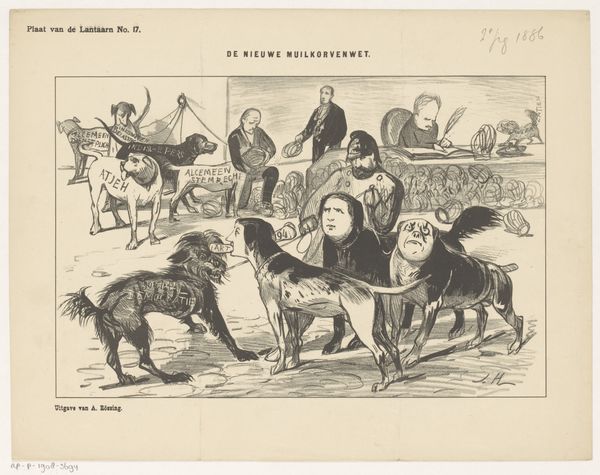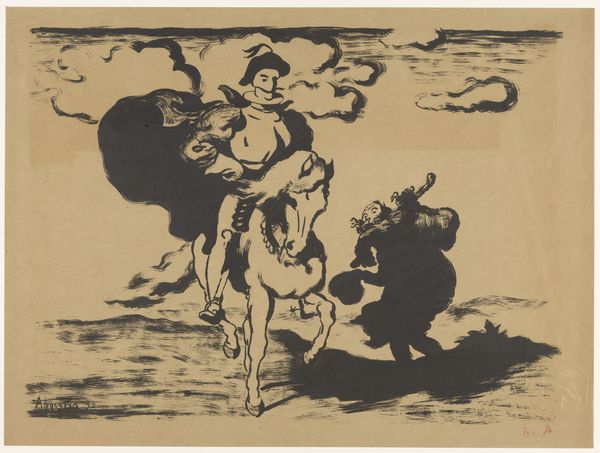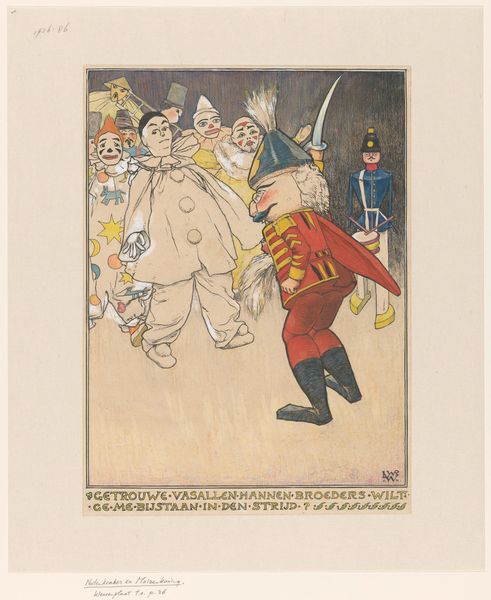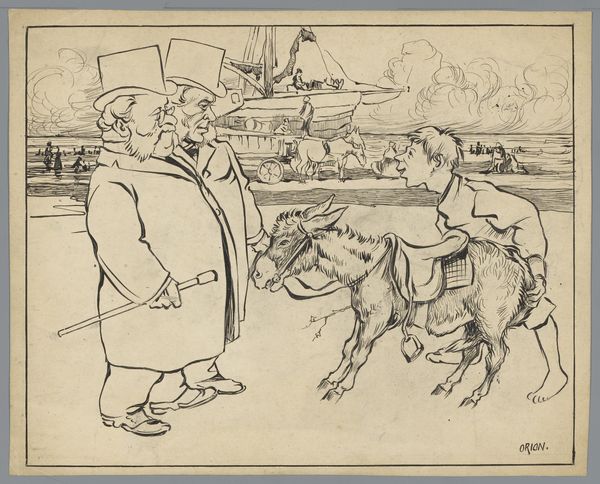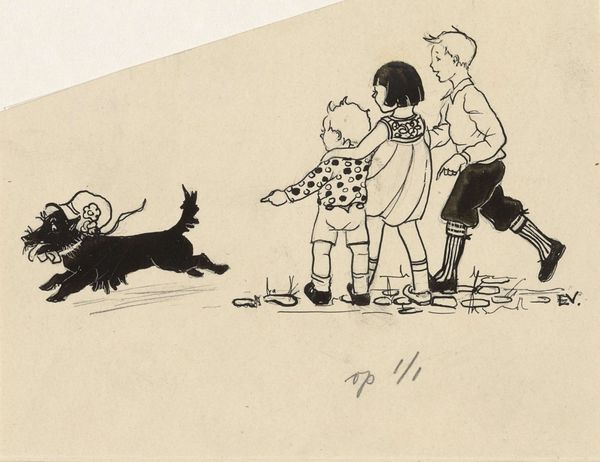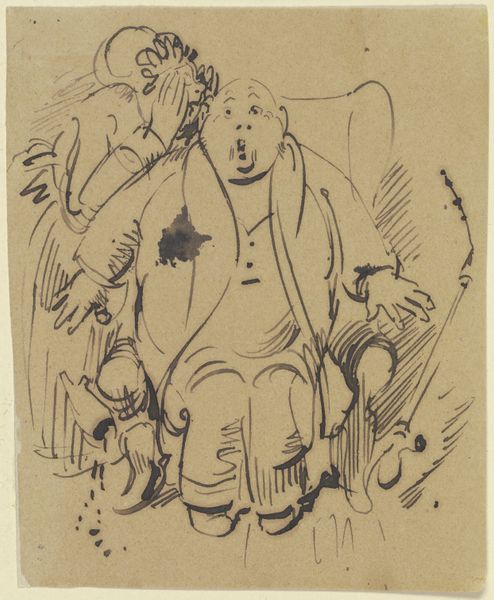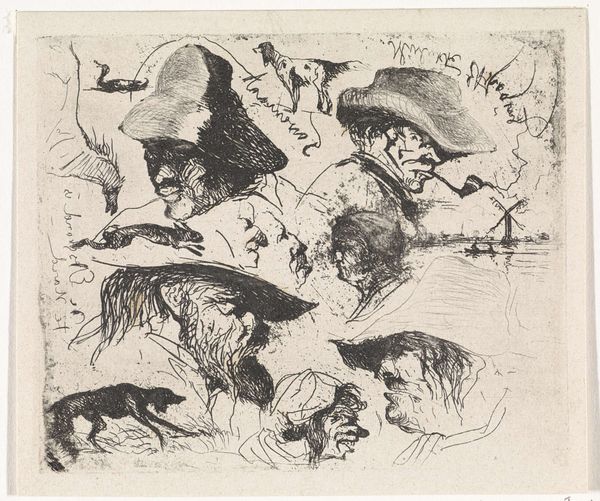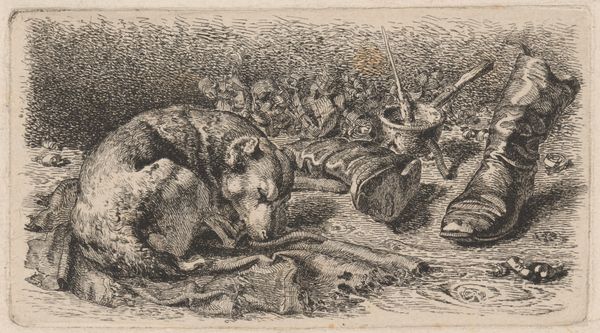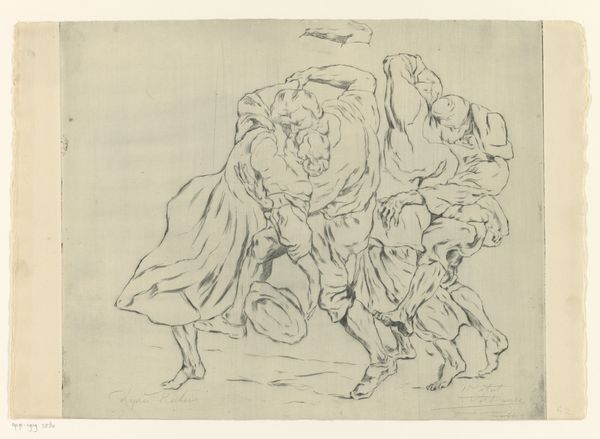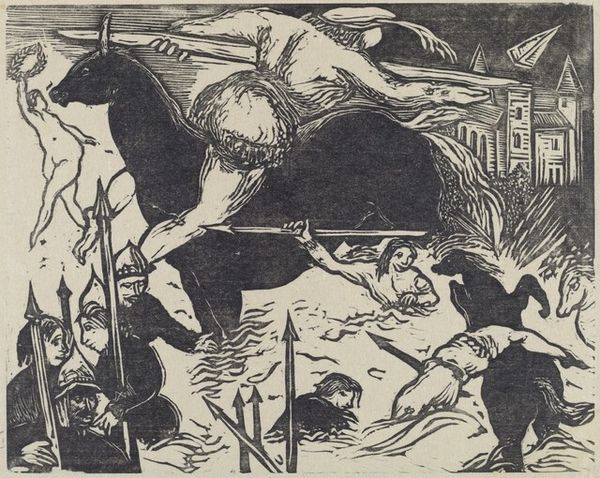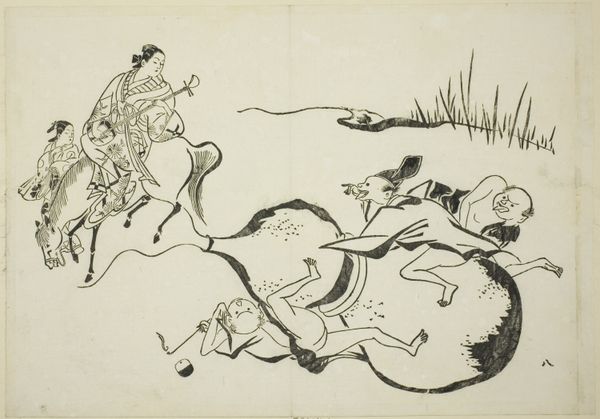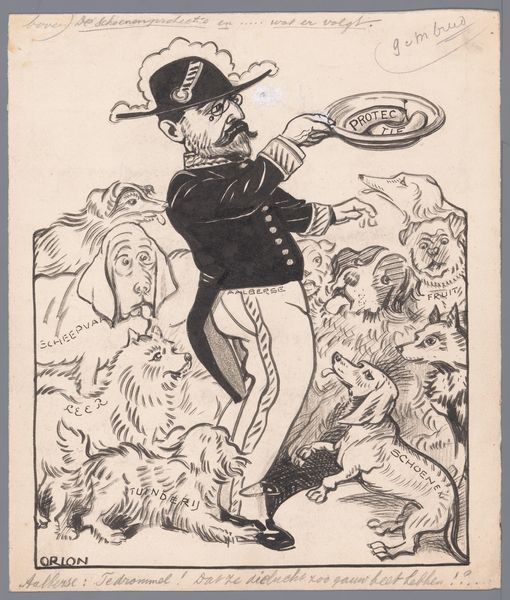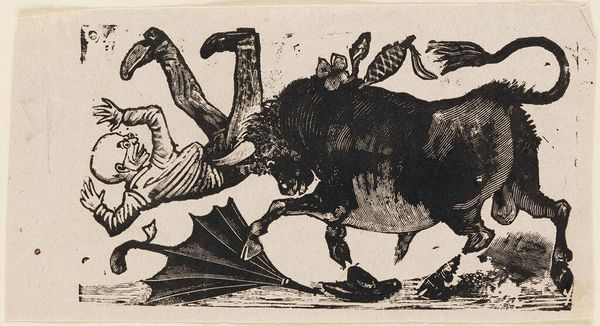
Spotprent op de kieswet van Johannes Tak van Poortvliet before 1898
0:00
0:00
Dimensions: height 190 mm, width 246 mm
Copyright: Rijks Museum: Open Domain
Curator: This is a satirical lithograph, likely from before 1898, titled "Spotprent op de kieswet van Johannes Tak van Poortvliet," which translates to "Cartoon on the election law of Johannes Tak van Poortvliet." It’s currently held at the Rijksmuseum. Editor: Immediately, I’m struck by the stark contrast in the lines and textures. The piece feels dense, agitated almost. Look at the rough hatching in the lower left. It speaks to me of urgency and the raw production involved. Curator: Indeed. Van Hoytema, the artist, was known for his detailed depictions of nature, but he also dabbled in political satire. The use of lithography allowed for mass production, making this a potent piece of political commentary for the time. The title clearly indicates its socio-political focus. Editor: Right, the lithographic process is critical here. It means accessible art, reaching a wider audience than an oil painting ever could. This isn't just decoration; it's meant to stir public sentiment and debate the value of labor and cost that entails. What statements were considered modern back then. Curator: Exactly. The context is the failed electoral reform proposed by Johannes Tak van Poortvliet. Each dog in the image represents a different political faction or figure involved in the debate, their names are even inscribed in the dog collars! It's a direct visual representation of the political landscape at the time. Editor: Note how Van Hoytema chose pen and ink – a readily available and cost-effective medium. And those dog collars, emblazoned with the faction names, become almost like branding. Its about manipulating the production itself. Curator: A keen observation! It highlights the role of imagery in shaping public opinion during a time of significant political change. You know, with each dog pulling and snarling it's a very direct and effective statement. Editor: Van Hoytema understood the material language. By emphasizing mass reproduction and employing simple techniques, he amplifies his social message far beyond any gallery wall. This is art as direct action. Curator: Ultimately, this print exemplifies the power of art as a tool for social and political engagement, allowing everyday citizens to confront and interpret the critical issues of their time. Editor: Precisely. And by understanding its method and reach we recognize the broader societal impact of this kind of art—challenging its audience through both image and process.
Comments
No comments
Be the first to comment and join the conversation on the ultimate creative platform.
